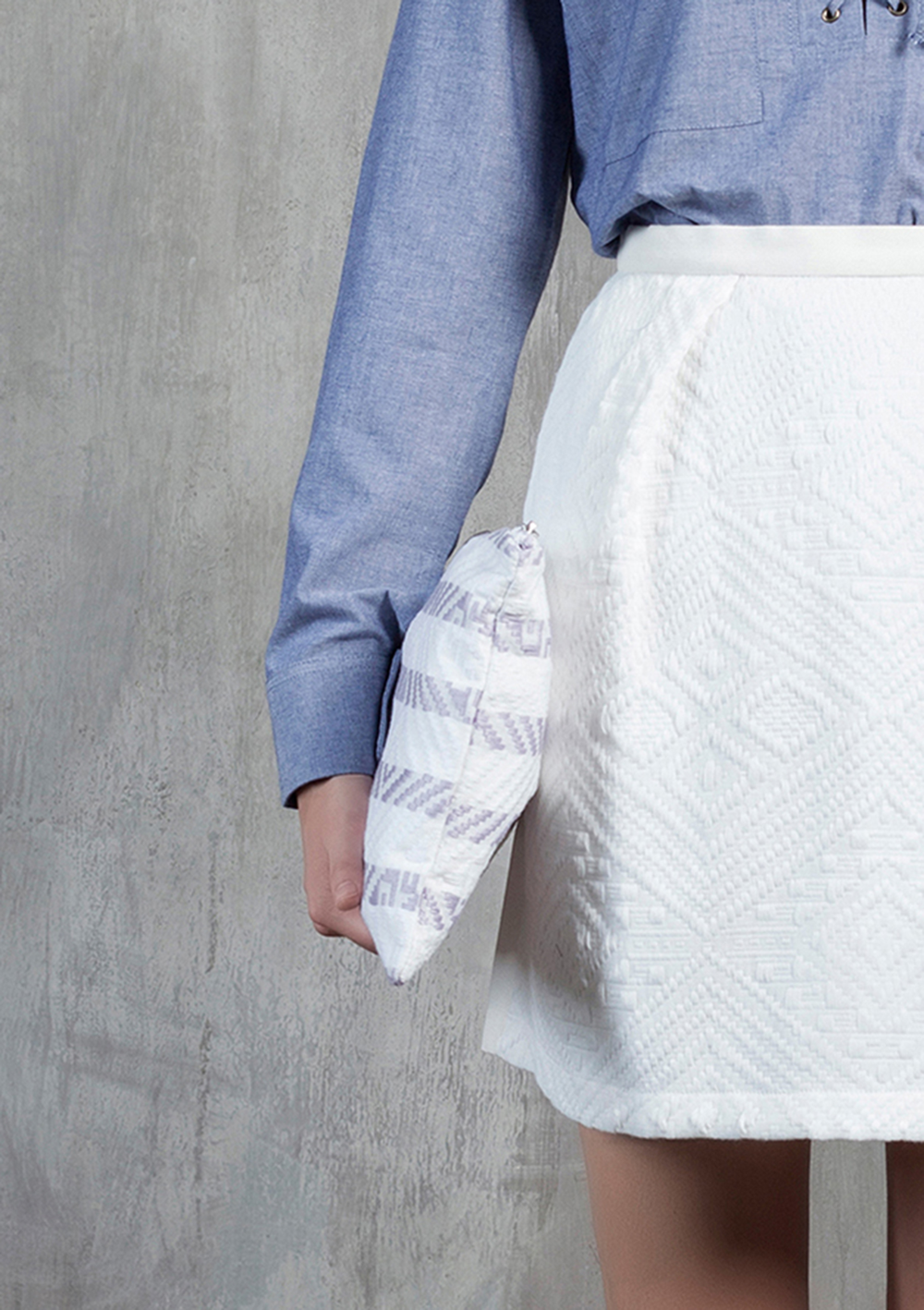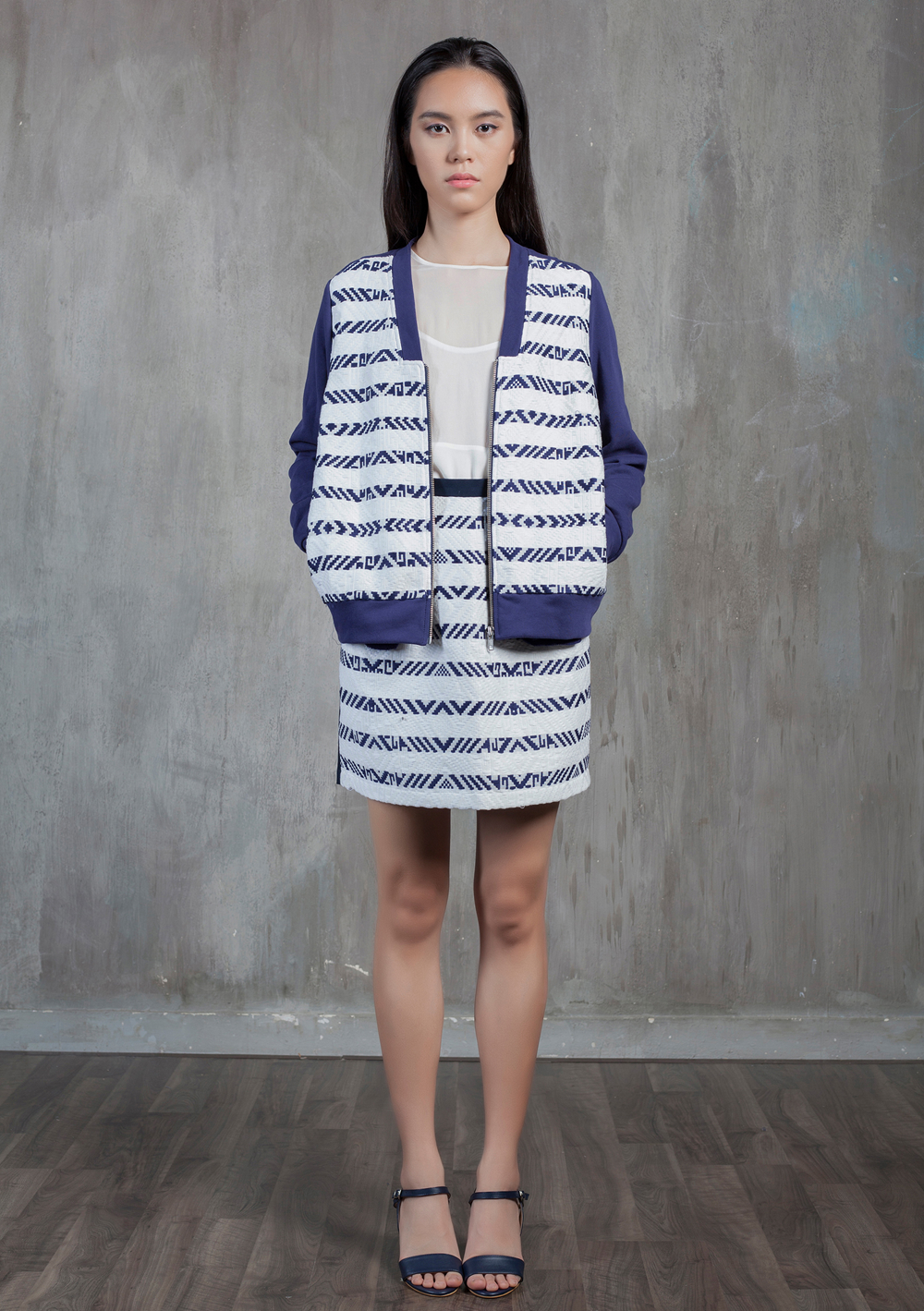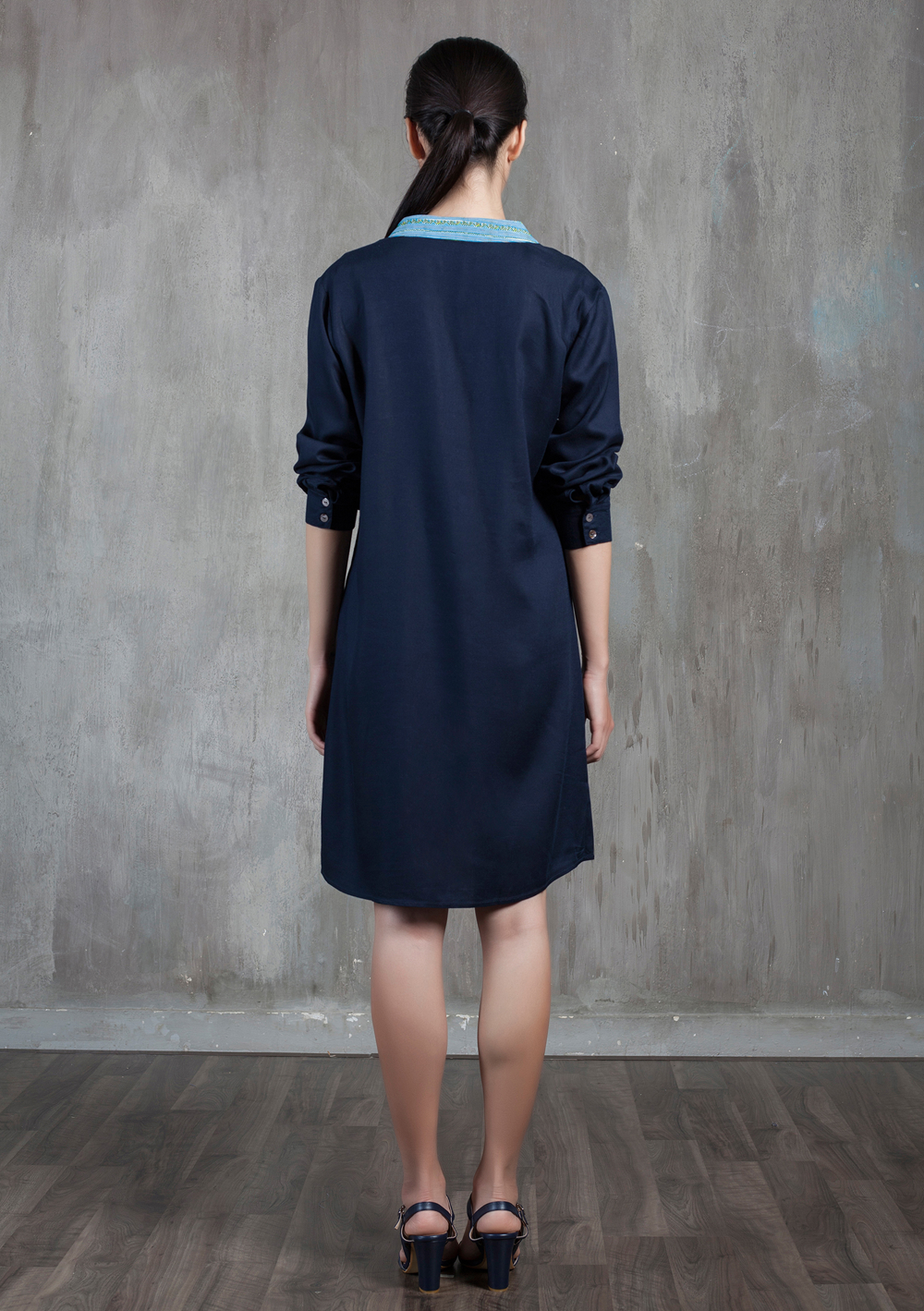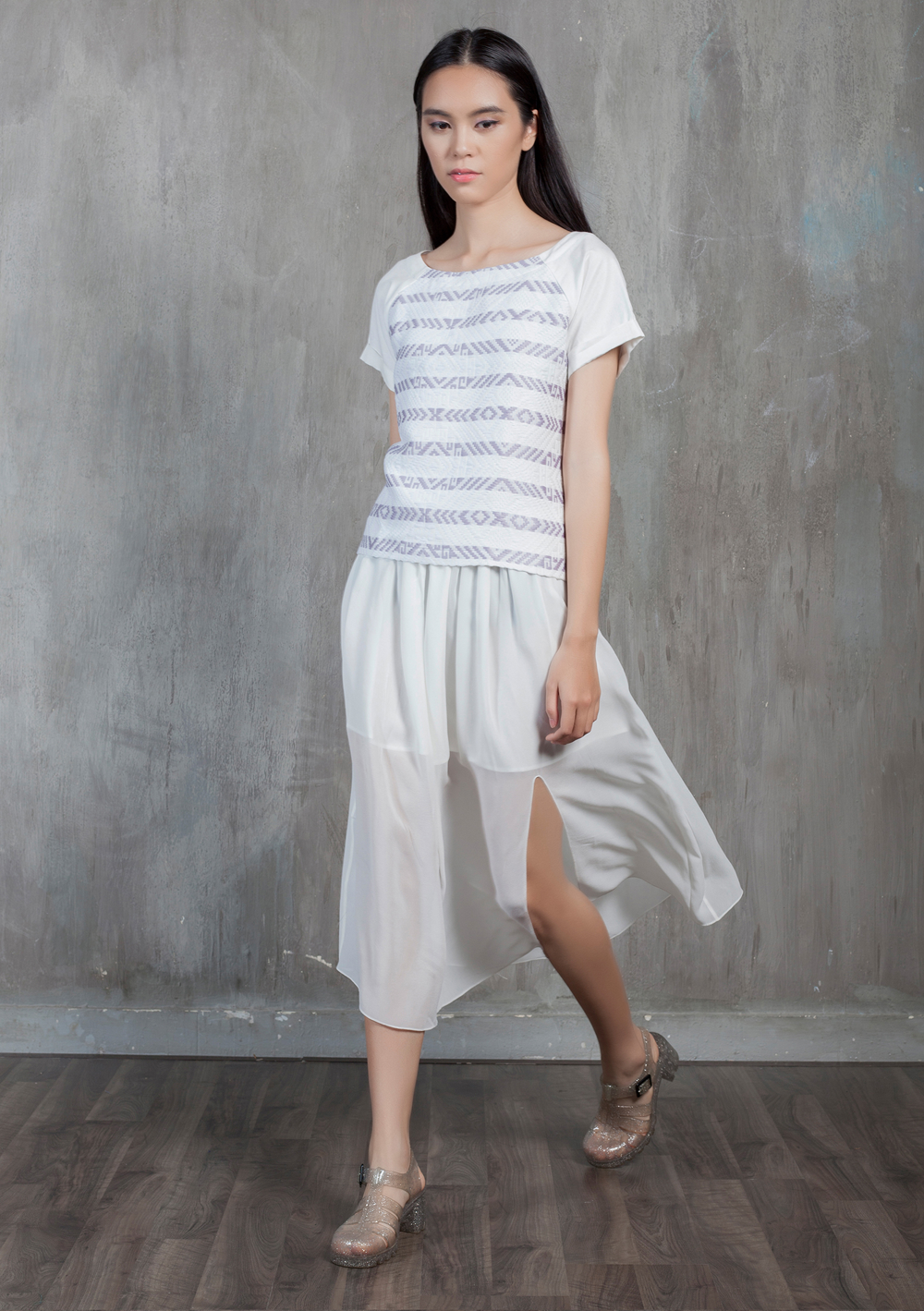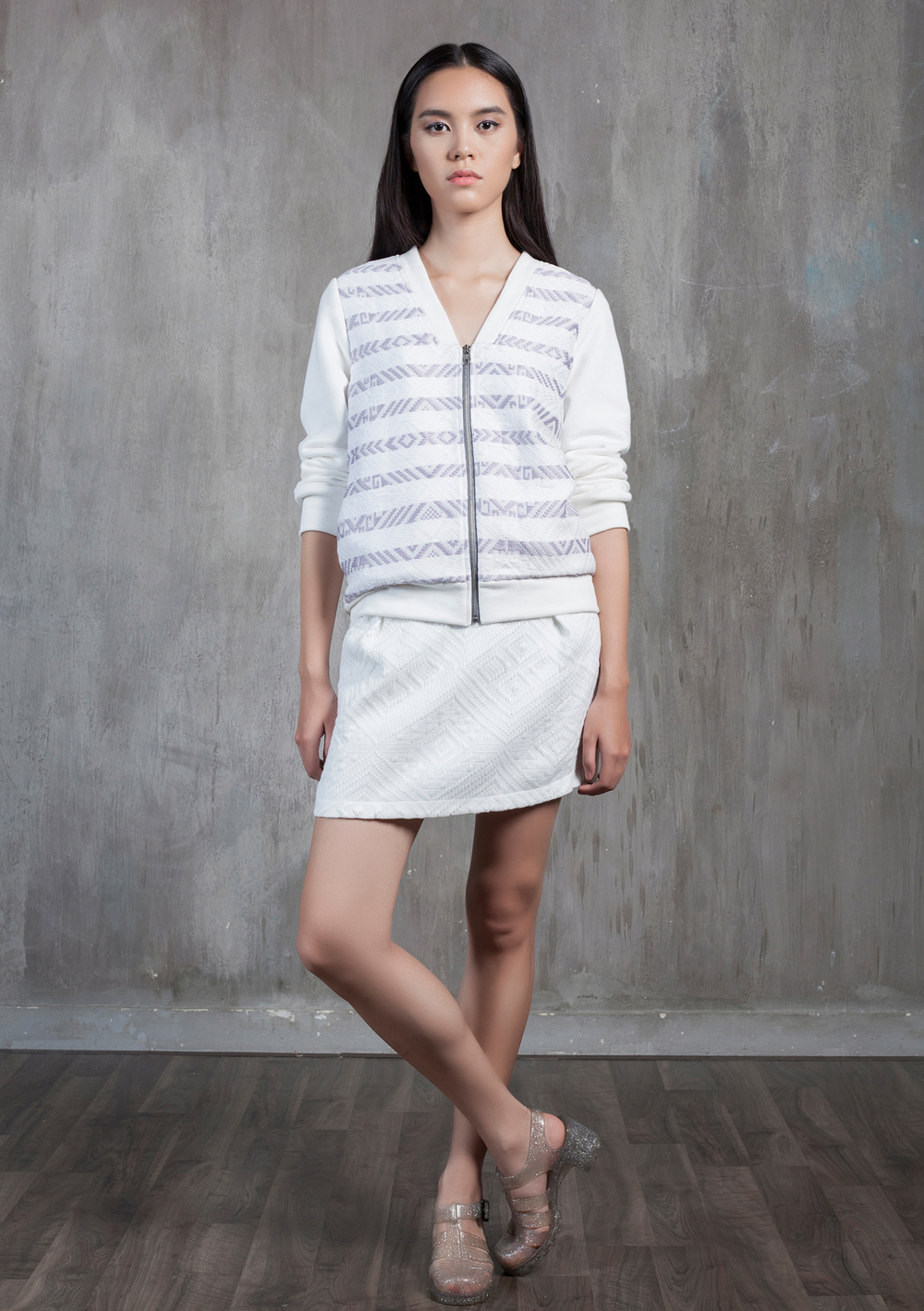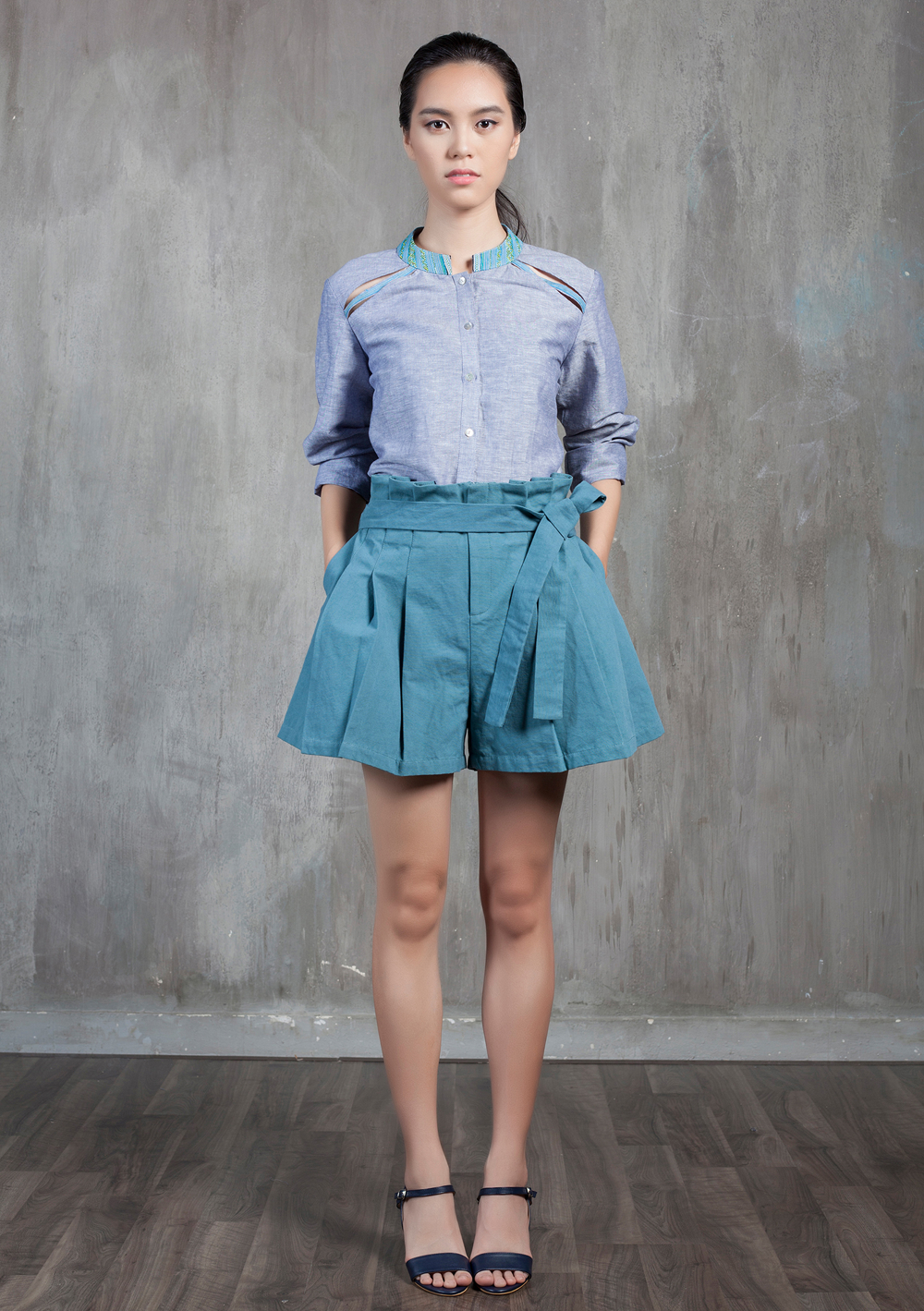Linda-Mai is a French-Vietnamese ethical designer based in Ho Chi Minh City, whose childhood memories of witnessing water wastage in her second homeland, France, inspired her journey towards conscious design. Behind the humble hues and preen prints at first sight, LMP reveals us a deeper cultural heritage behind her detailed craftmanship — SS16 particularly speaks of exotic patterns and paints powerful pictures of travels to foreign, faraway lands. Expect LMP’s collections change as fast as a camera roll of your ‘fashion travel journal’, encompassing the enigmatic heritage of joyous journeys around the world. If you haven’t thought through your summer’s one-way ticket yet, come admire closer.
How are sustainability principles incorporated into your design work?
I only choose to work with eco-textile, handmade or natural fabrics. From the first moment I think of a new creation, I am already wondering how I can design it to be the least harmful for the environment, last as long as possible and incorporate an additional cultural story to it.
What made you think differently and become more aware of the harm mass-production can cause to nature? Describe your journey towards consciousness.
When I was a child, we had routinely ecological awareness activities at school and one time my teacher made us visit a water treatment plant in our region in France. I could not believe with my own eyes the amount of rubbish people throw away in the water, how hard it is to clean it, and how much people waste water every day, when some other kids in the world don’t even have access to drinkable water. That is when I realised how precious our planet’s natural resources are, and that we should protect them before we run out of them.
“Discovering that the textile industry is one of the most polluting in the world and directly or indirectly causes throes to humanity depressed me at first, but in the end, [it is what] led me to creating my own eco-fashion brand inspired by Vietnam, respecting workers and the environment.”
How have different places, cultures and traditions inspired your work? For example, Paris vs Saigon.
I was born in France, but have a Vietnamese heritage — my parents were refugees and we visited Vietnam for holidays often in the 90s. There I discovered the richness of Vietnamese craftsmanship, but also became very conscious of the inequalities between me and my cousins, because we were not born exactly 9000 kilometres apart.
I’ve always enjoyed expressing myself creatively, but at the age of 14, I started to think that I should act for a better world — it became obvious to me that my job must conciliate my passions and my values together. Fashion is the medium that helps me express myself the best, because I love the fact that it has the possibility of reflecting your ideas and [contouring] all the craftsmanship behind it.
Discovering that the textile industry is one of the most polluting in the world and directly or indirectly causes throes to humanity depressed me at first, but in the end, [it is what] led me to creating my own eco-fashion brand inspired by Vietnam, respecting workers and the environment.
What stories have inspired your designs? Where does the design process actually begin and ideas start to take shape?
I am a big romantic — I love telling stories with my designs. Sometimes I invent it from travelling or meeting inspiring people; sometimes I read a fairy tale, and drawings, fabrics, prints and colours start appearing in my head and dreams as if by magic.
“At the age of 14 I started to think that I should act for a better world — it became obvious to me that my job must conciliate my passions and my values together.”
How do you start your days? Describe a morning that feels like paradise.
After waking up, I take some time for meditation. Then I’d like my coffee to be magically already prepared and the smell of it to fill the whole apartment. After breakfast, I'd walk to the fabric market next to my flat to look at new arrivals for inspiration. At lunch time, you’d find me sitting at my favourite vegetarian place — Prem bistrot — to prepare for an afternoon of visiting new exhibitions in town or meeting inspiring people, or even better, planning a travel to somewhere exotic…
How is sustainability represented in your own personal wardrobe?
I shop eco and local designers as much as possible, and many of my clothes are custom-made by tailors here. I committed myself years ago not to buy clothes from fast-fashion stores anymore, which was really hard for me as a fashion lover, I have to admit. But organically I started buying less and have now really good classics in my wardrobe, which will actually last a long time. Back in time, when I lived in Europe, I often used to go to thrift stores because I was a poor student, and also because vintage fashion was all the rage at that time.
What are the main challenges you’ve encountered on your journey of designing ethically?
Finding eco-fabrics in small quantities and the continuous fight to convince people that ethical fashion is actually sexy.
How can we encourage more people to support eco fashion and become more aware of the harmful impact mass production can have on our environment?
Through education and awareness both online and offline. [Yet educating people on the consequences is] a difficult and long process, because it is very easy to distance yourself from the harmful impact buying a cheap T-shirt can cause to people living on the other side of the planet.
Also, because shopping is considered as an entertainment or a hobby, taking this pleasure away by giving a lesson on how ‘dangerous’ it can be is not very well accepted. My message to the readers would be — please remember that we all stay on the same planet. We all want to be happy and live as long as possible on it, so at your own scale, there are a few very small changes to introduce into your lifestyle to make it a nicer place for everyone. In my vision, one day in the near future, the majority will choose to buy better.
